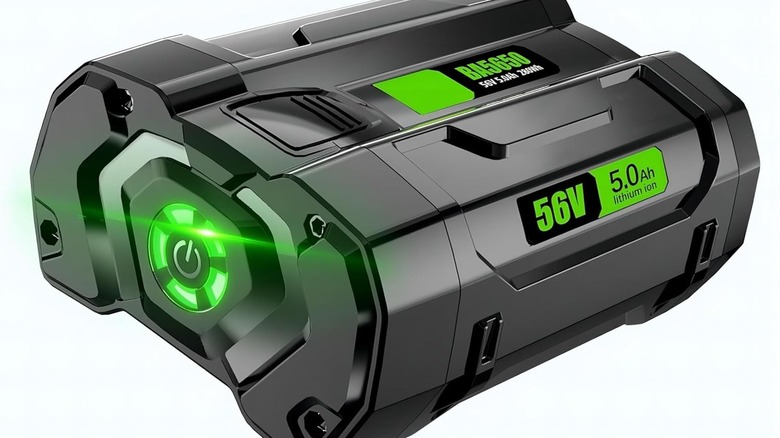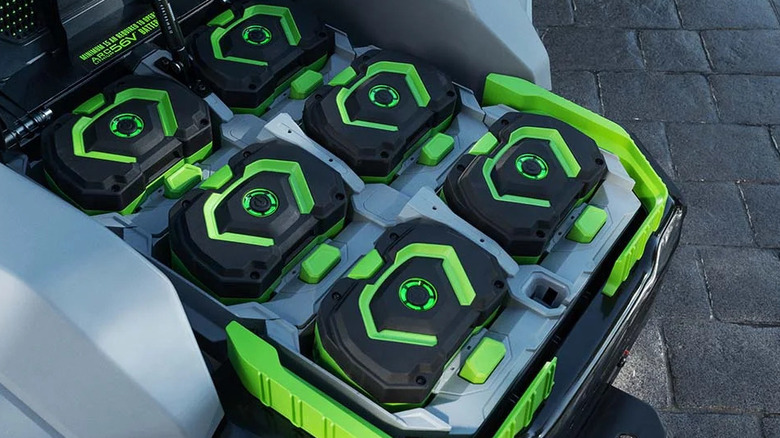How Do EGO Batteries Stack Up Against Ones From Other Major Tool Brands?
We may receive a commission on purchases made from links.
EGO is one of the younger power tool brands, first appearing on the market in 2012. Yet, in a relatively short space of time, the brand has built a reputation for high-quality equipment and market-leading performance. Although there are some lifestyle products in the range, the main focus is on lawn and garden equipment; it sells a compact lawn mower that was rated as one of the ten must-buy power tools for first time homeowners. There are string trimmers, chainsaws, blowers, hedge trimmers, etc. At the upper end of the range is a 52-inch ride-on lawn mower that EGO claims is capable of cutting 4 acres on a single charge.
It manages this impressive feat by running six high-capacity batteries at the same time. So clearly this technology is a major factor in EGO Power's success, but how do EGO batteries stack up against other major tool brands? Normally, we might make comparisons with leading names like DeWalt or Milwaukee, but EGO doesn't currently make drills, saws, and so on. So in order to compare like with like, we wanted to look at brands that have a particularly strong presence in the same lawn and garden sector. To do this, we chose Greenworks and Ryobi.
Voltage is important, but it isn't everything
All EGO power tools use 56V batteries — performance increases are achieved by combining two or more in the same device. Ryobi has a wide range of tools that can help whip your lawn into shape with three battery sizes: 18V, 40V, and 80V. Greenworks has even greater choice, with 24V, 40V, 60V, and 80V batteries. Greenworks and Ryobi also combine batteries for higher output.
However, voltage figures aren't necessarily the best way to judge how EGO batteries stack up against other major tool brands. While its 56V battery produces less pure power than the Ryobi and Greenworks 80V models, EGO claims that its unit delivers as much actual usable power as those larger units. The brand points out that the way the battery manages the available power makes a big difference and claims on the EGO website, "Based on power, performance, durability, and value, the EGO POWER+ platform is rated #1 in the industry." That said, the brand doesn't back that up with actual figures.
Another important measure of battery performance is Amp hours (Ah). In a nutshell, the higher the Ah rating, the longer the battery runs between charges. Currently, EGO's biggest battery is a 12Ah version. Greenworks has a 60V at 8AH, and Ryobi has a 12Ah version (but only at 40V) or a 10Ah at 80V. Price, of course, is always a factor — The EGO battery is currently $599 on Amazon, the Greenworks is $349, and the 10AH Ryobi is $899.
EGO batteries definitely make life easier, but is that enough?
Our top battery brands all offer standard chargers and more expensive 'rapid' or 'turbo' chargers that reduce the wait. However, voltage, Ah, and the battery's age all affect charging speed, so making comparisons would likely result in a lot of data without actually telling us much.
In fact, it's difficult to draw many solid conclusions. The fact that all EGO batteries are the same voltage and only require one charger is certainly convenient. If you bought Ryobi or Greenworks tools, you might end up needing several. While EGO batteries seem to stack up well against other major brands, the high-performance tools may not be what you need. For example, if you're looking for a lightweight weed wacker, an 18V Ryobi or 24V Greenworks could be a better choice; EGO simply doesn't do low power options. If you're looking for more powerful tools, such as top-rated snow blowers to keep your walkways safe this winter, EGO's options are certainly competitive, but machine weight, maneuverability, and snow throwing distance will probably be more important than battery specifications.
Comparing prices isn't straightforward because EGO's 56V battery isn't the same size as competing models. In general, Greenworks is noticeably more budget-friendly, and Ryobi appears a little cheaper then EGO, but it depends on configuration. However, there's no denying that the way EGO combines its batteries in large arrays (for 336V in the case of the riding mower) delivers performance that is hard for rivals to beat.


